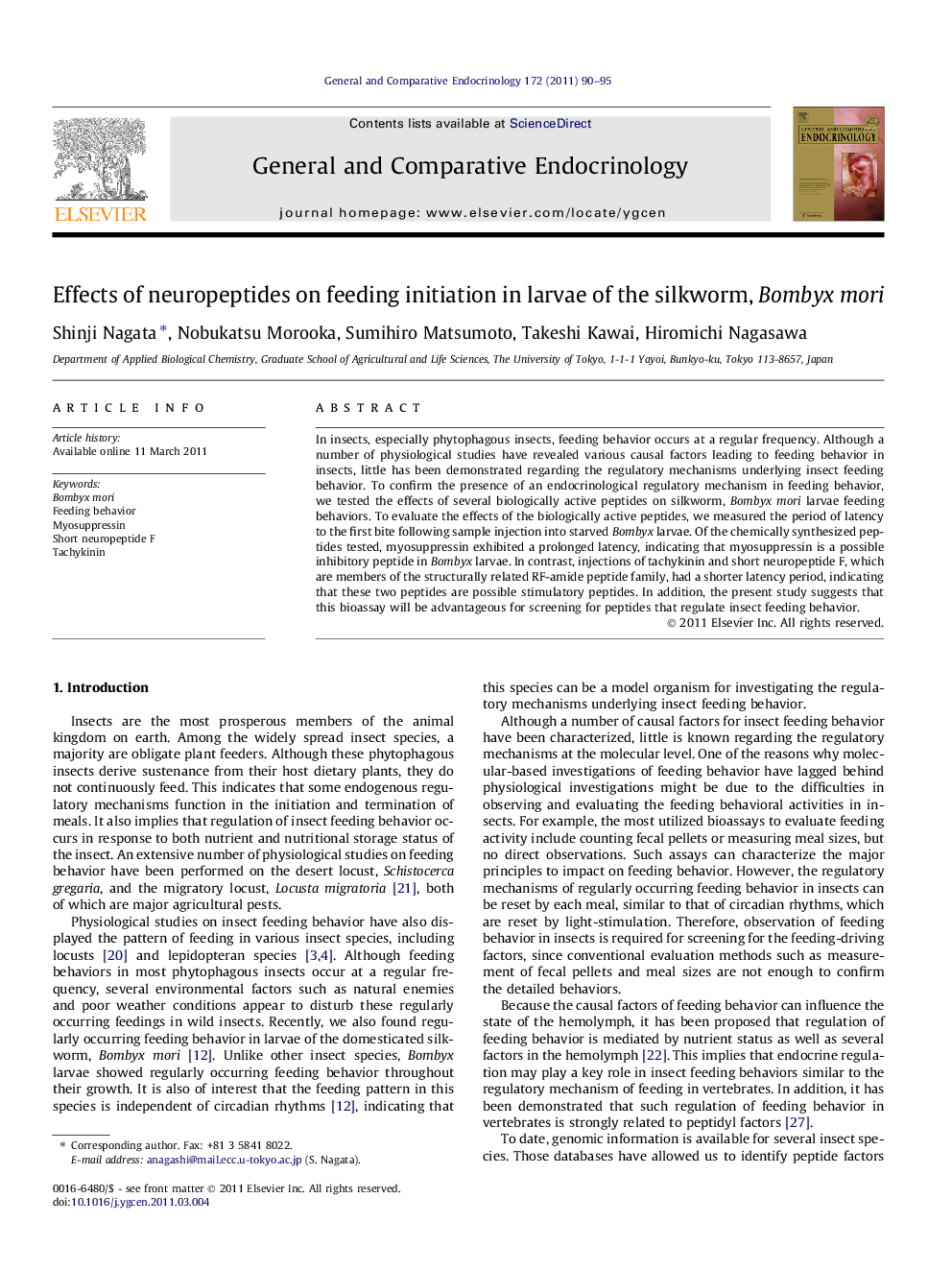| Article ID | Journal | Published Year | Pages | File Type |
|---|---|---|---|---|
| 2800861 | General and Comparative Endocrinology | 2011 | 6 Pages |
In insects, especially phytophagous insects, feeding behavior occurs at a regular frequency. Although a number of physiological studies have revealed various causal factors leading to feeding behavior in insects, little has been demonstrated regarding the regulatory mechanisms underlying insect feeding behavior. To confirm the presence of an endocrinological regulatory mechanism in feeding behavior, we tested the effects of several biologically active peptides on silkworm, Bombyx mori larvae feeding behaviors. To evaluate the effects of the biologically active peptides, we measured the period of latency to the first bite following sample injection into starved Bombyx larvae. Of the chemically synthesized peptides tested, myosuppressin exhibited a prolonged latency, indicating that myosuppressin is a possible inhibitory peptide in Bombyx larvae. In contrast, injections of tachykinin and short neuropeptide F, which are members of the structurally related RF-amide peptide family, had a shorter latency period, indicating that these two peptides are possible stimulatory peptides. In addition, the present study suggests that this bioassay will be advantageous for screening for peptides that regulate insect feeding behavior.
Graphical abstractFigure optionsDownload full-size imageDownload as PowerPoint slideHighlights► Effects of several neuropeptides on feeding by Bombyx larvae were tested. ► Injection of myosuppressin prolonged the latency to the first bite. ► Injection of sNPF and tachykinin shortened the latency to the first bite.
